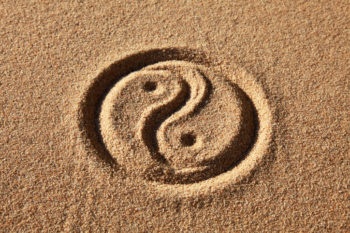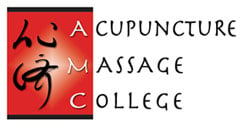 To understand traditional Chinese medicine, it helps to learn more about some important underlying concepts, including Yin and Yang. These two elements define Yin-Yang Theory and have various properties that inform the philosophy of traditional Chinese medicine and healing. Nothing in the universe can exist without these elements, which are opposite but also dependent on one another. But what are Yin and Yang exactly?
To understand traditional Chinese medicine, it helps to learn more about some important underlying concepts, including Yin and Yang. These two elements define Yin-Yang Theory and have various properties that inform the philosophy of traditional Chinese medicine and healing. Nothing in the universe can exist without these elements, which are opposite but also dependent on one another. But what are Yin and Yang exactly?
According to Merriam-Webster, the definition of Yin is:
"[T]he feminine passive principle in nature that in Chinese cosmology is exhibited in darkness, cold, or wetness and that combines with [Y]ang to produce all that comes to be"
The definition of Yang is:
"[T]he masculine active principle in nature that in Chinese cosmology is exhibited in light, heat, or dryness and that combines with [Y]in to produce all that comes to be"
Learning more about the properties of Yin and Yang and how they relate to and interact with each other will help you understand what they represent and how they influence the philosophy of traditional Chinese medicine.
The aspects of Yin and Yang
Yin and Yang complement and balance each other via four aspects, which define the relationship between them. These are the four aspects of the relationship between Yin and Yang:
- Opposition of Yin and Yang
- Interdependence of Yin and Yang
- Mutual consumption of Yin and Yang
- Inter-transformation of Yin and Yang
Yin and Yang are opposite, but one cannot exist without the other, which means they are also interdependent. Just as day transforms into night, Yin constantly transforms into Yang. As Yin and Yang change balance, it makes an impact at the individual and big picture levels.
The correspondences of Yin and Yang
According to Chinese theory, two forces exist in the universe. Yin is a passive, negative force, while yang is an active, positive force. According to this theory, these forces exist in the seasons, food and everything else in nature and the world. These concepts also help underscore diagnosis and treatment in traditional Chinese medicine.
Yin-Yang Theory teaches that everything is a product of two principles, Yin is considered weak, female and destructive, while yang is considered strong, male and creative. The interaction between these two principles produces the five elements.
The five essential substances
The five essential substances, or elements, are aspects of qi — or life force energy — and have their own associations. They are:
- Wood
- Fire
- Earth
- Metal
- Water
They each have associations with seasons, colors, characteristics, organs and specific health problems, which a practitioner of Chinese medicine can help treat. Someone who is healthy will experience a unique, but harmonious, balance of these five elements.
Examples of Yin and Yang correspondences
Yin-Yang Theory applies to different categories in the natural world, and manifests different meanings. Remember that Yin and Yang are constantly changing and cyclical. You can look at the Yin Yang correspondences chart and see, for example, that under the category of sky, Yin manifests as the moon, while under Yang, sky manifests as the sun.
To understand Yin and Yang further, it may help to learn about more specific correspondences. Here are several examples of Yin-Yang in nature from the correspondences chart. The first word represents the category, while the second word corresponds to Yin, and the third word corresponds to Yang:
Sky: Moon-Sun
Time: Midnight-Midday
Season: Winter-Summer
Temperature: Cold-Heat
Humidity: Wet-Dry
Spectrum: Dark-Luminous
World: Hidden-Evident
Solidity: Dense-Porous
Texture: Hard-Soft
Mass: Heavy-Light
Stage: Forming-Transformer
Shape: Material Substance-Subtle Influence
The fundamentals of Yin and Yang
In summary, these are the most important aspects to remember about the concepts of Yin and Yang:
- Yin Yang is the most important theory in Traditional Chinese Medicine, underlying all physiology, pathology and treatment
- Yin has a component of Yang, and Yang has a component of Yin, represented by the dots in the Yin-Yang symbol
- Yin and Yang are constantly changing and cyclical
To learn more about the philosophy behind traditional Chinese medicine and the programs at the Acupuncture & Massage College, you can email our admissions department.

 (305) 595-9500
(305) 595-9500







